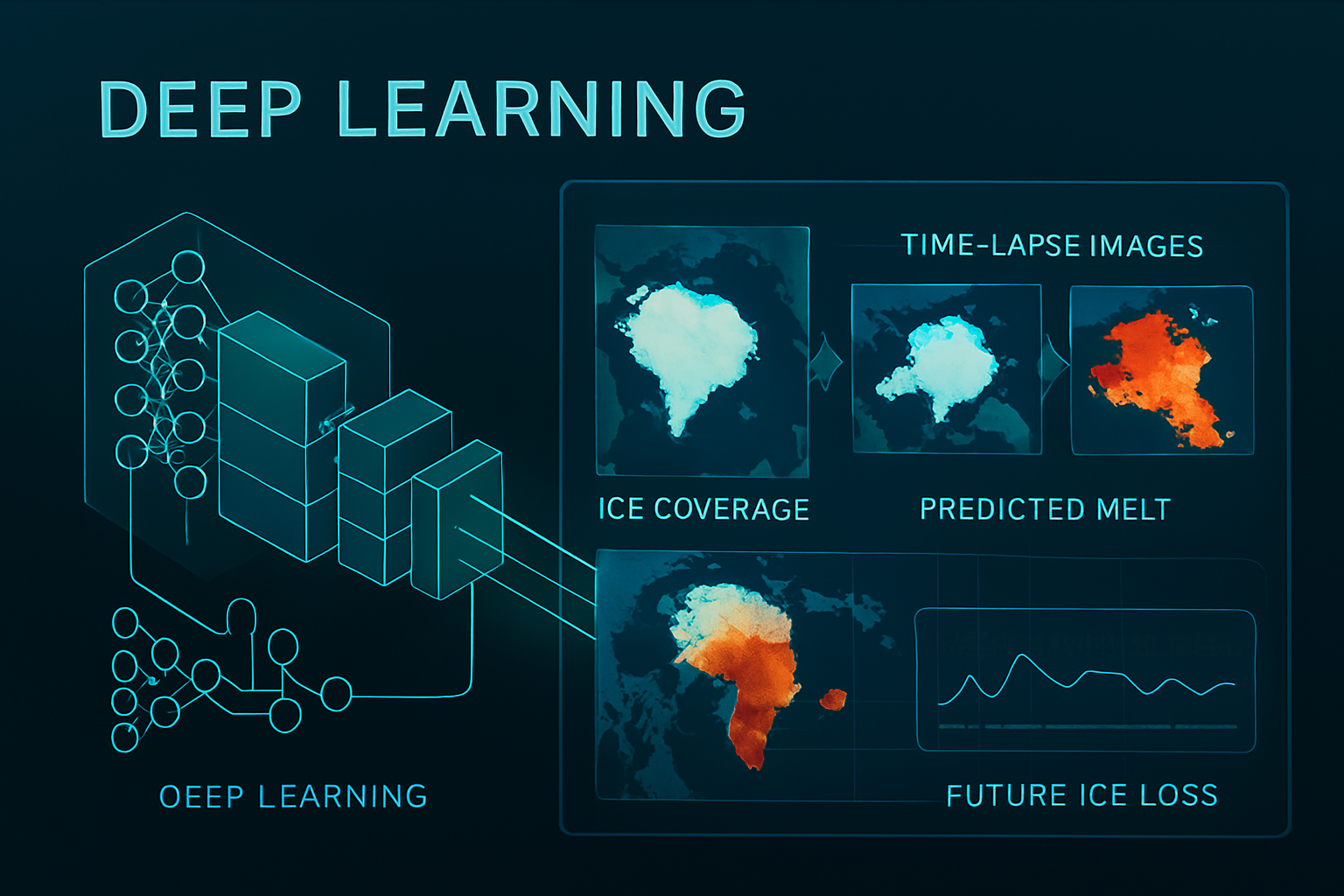
Machine Learning Models for Climate Change Predictions
Climate change is one of the most pressing global challenges of our time. Rising temperatures, shifting weather patterns, sea-level rise, and increasing extreme weather events pose significant risks to ecosystems, economies, and human health. Understanding and predicting these changes is essential for effective mitigation and adaptation strategies.
While traditional climate models—based on physical equations and simulations—have long been used to forecast environmental changes, the growing complexity and sheer volume of climate data require more advanced tools. This is where machine learning (ML) comes into play. Machine learning offers powerful methods for uncovering hidden patterns, improving prediction accuracy, and accelerating climate science.
In this article, we explore how machine learning is transforming climate change predictions and helping researchers, policymakers, and communities plan for a changing planet.
What Is Machine Learning in Climate Science?
Machine learning is a subset of artificial intelligence that enables systems to learn from data without being explicitly programmed. In the context of climate science, ML models can:
- Learn from vast datasets of historical and real-time environmental observations
- Identify nonlinear relationships and complex patterns in climate systems
- Enhance the performance and efficiency of physical climate models
- Provide high-resolution local forecasts that were previously unattainable
Applications of ML in Climate Change Predictions
- Temperature and Precipitation Forecasting
ML models like random forests, gradient boosting, and deep neural networks are being used to predict temperature and rainfall patterns. These models learn from historical climate data and satellite imagery to generate short- and long-term forecasts at regional and global scales.
- Extreme Weather Event Prediction
Predicting events such as hurricanes, heatwaves, and floods has historically been difficult due to their chaotic nature. ML excels at recognizing precursors in atmospheric data and can improve lead times and accuracy in warning systems.
- Sea-Level Rise Projections
Machine learning helps integrate multiple datasets—from satellite altimetry to coastal tide gauges—to model sea-level trends and make projections under different greenhouse gas emission scenarios.
- Ice Sheet and Glacier Dynamics
Deep learning models can analyze satellite images and physical measurements to track ice sheet melting, predict glacier retreat, and assess their impact on ocean circulation and sea level.
- Land Use and Carbon Cycle Modeling
ML supports the analysis of vegetation changes, deforestation, and carbon sequestration. It helps model the impact of land use changes on greenhouse gas emissions and climate feedback loops.
- Downscaling Global Models
Traditional global climate models operate at coarse resolutions (50–100 km). ML techniques like convolutional neural networks (CNNs) can downscale these outputs to finer grids (1–5 km), making them more relevant for local decision-making.
- Climate Scenario Generation
Generative models, such as Variational Autoencoders (VAEs) and Generative Adversarial Networks (GANs), can simulate future climate scenarios by learning the statistical distribution of past data. These synthetic scenarios complement traditional models in uncertainty analysis.
Key Machine Learning Techniques Used
- Supervised Learning: Used for regression and classification tasks like temperature prediction or extreme event detection.
- Unsupervised Learning: Helps cluster and identify unknown patterns in climate data.
- Deep Learning: Particularly useful for spatial-temporal data like satellite imagery and time series.
- Reinforcement Learning: Being explored for optimizing climate interventions and geoengineering simulations.
Benefits of Using ML in Climate Science
- Faster simulations and data processing
- Improved accuracy in forecasting and anomaly detection
- Ability to handle high-dimensional, non-linear systems
- Enhanced localization and contextual understanding
- Complementary insights to physical models
Challenges and Considerations
- Interpretability: Many ML models act as “black boxes,” which can be problematic in scientific contexts where transparency is critical.
- Data Quality and Bias: ML is highly sensitive to the quality, completeness, and representativeness of the data.
- Integration with Physics: Ensuring ML respects the laws of thermodynamics and conservation is an ongoing research area.
- Computational Resources: Training and validating ML models for climate-scale problems require significant computational power.
Looking Ahead
The future of climate prediction lies in hybrid models that combine the strengths of physical simulations and machine learning. These AI-enhanced climate models will not only improve accuracy but also offer new insights into tipping points, feedback loops, and climate resilience strategies.
Initiatives such as Climate Change AI, the AI for Earth program, and collaborations with major climate research institutions signal a growing commitment to using machine learning for planetary health.
Conclusion
Machine learning is redefining how we understand and respond to climate change. By improving predictions and enabling better-informed decisions, ML models are essential tools in the fight against global warming. As data grows and models evolve, the integration of AI into climate science will be crucial in shaping a sustainable and resilient future.
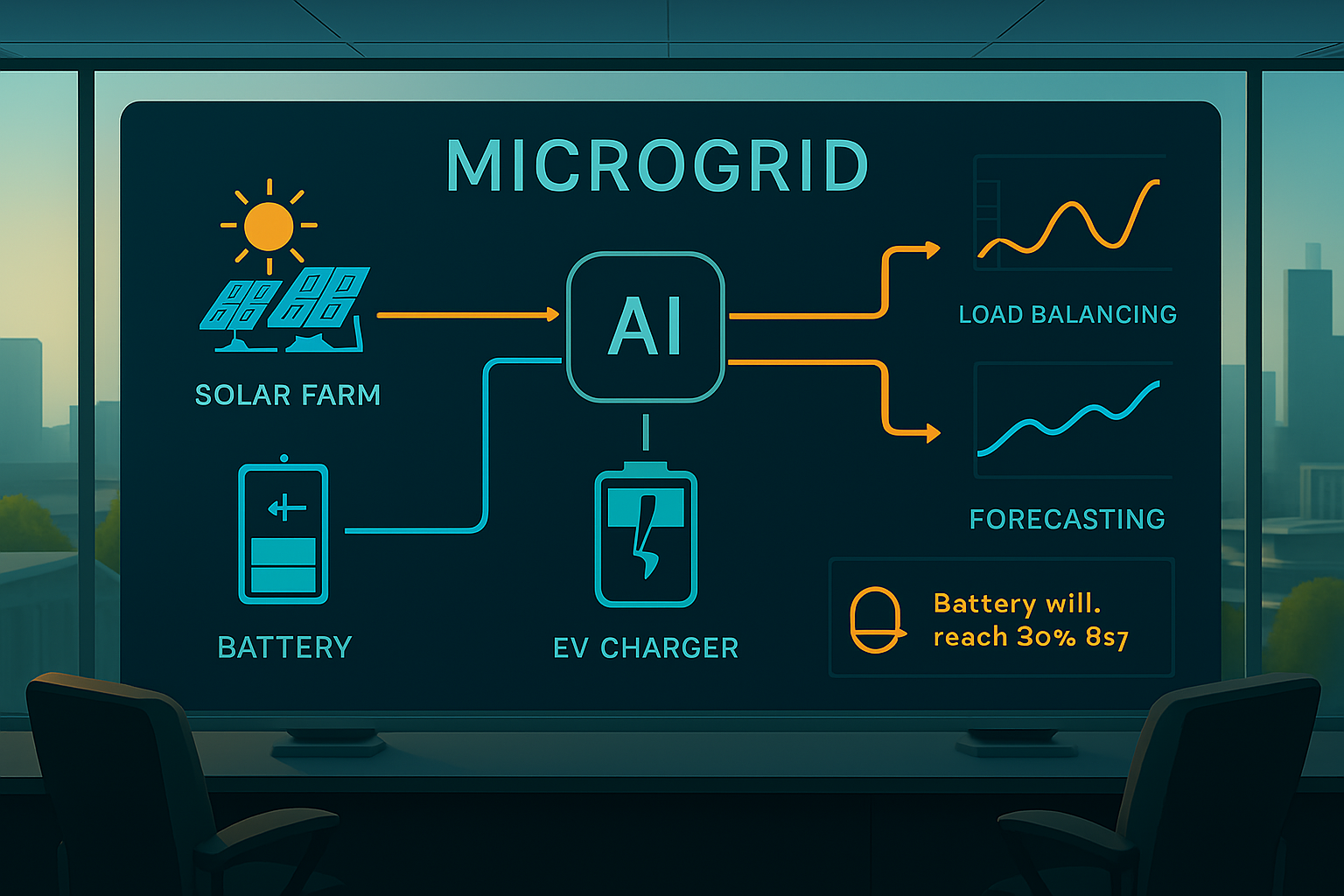
The Role of AI in Decentralized Energy Systems
The global energy landscape is undergoing a fundamental transformation. As the world moves away from fossil fuels and toward cleaner, more sustainable energy sources, the traditional centralized energy grid model is giving way to decentralized energy systems (DES). These systems rely on distributed energy resources (DERs)—like rooftop solar panels, wind turbines, home batteries, electric vehicles, and microgrids—operating in a more flexible and localized manner.
However, managing decentralized energy networks is far more complex than traditional grids. Enter Artificial Intelligence (AI)—a critical enabler of smarter, more adaptive, and more efficient decentralized energy systems. AI makes it possible to balance demand and supply in real-time, optimize energy usage, forecast generation, and enhance reliability in a distributed infrastructure.
What Are Decentralized Energy Systems?
Decentralized energy systems involve producing and storing energy near the point of consumption, rather than relying solely on large-scale, centrally located power plants. Common components of DES include:
- Solar photovoltaic (PV) systems on buildings
- Battery energy storage systems (BESS)
- Local wind turbines
- Combined heat and power (CHP) units
- Peer-to-peer energy trading platforms
- Microgrids that can operate independently from the main grid
The decentralized model supports energy independence, resilience, and sustainability. But it also requires intelligent coordination—something AI is uniquely suited to provide.
How AI Supports Decentralized Energy Systems
- Demand Forecasting and Load Balancing
AI models analyze historical and real-time consumption patterns to accurately forecast energy demand at the household, community, or microgrid level. This helps in managing loads efficiently, avoiding shortages or surpluses, and reducing reliance on the main grid.
- Renewable Generation Forecasting
Weather-dependent resources like solar and wind power can be highly variable. AI uses satellite data, weather models, and local sensor inputs to predict short- and long-term generation potential—improving reliability and planning.
- Smart Energy Management
AI-powered systems autonomously manage when to store energy, when to consume it, and when to send it back to the grid. For example, home energy management systems (HEMS) use AI to optimize appliance use, battery charging, and solar feed-in.
- Peer-to-Peer Energy Trading
In decentralized networks, prosumers (consumers who also produce energy) can trade excess energy locally. AI supports dynamic pricing, matchmaking of buyers and sellers, and trust management in blockchain-based platforms.
- Fault Detection and Grid Resilience
AI systems monitor the health of decentralized assets and networks, detecting anomalies like equipment malfunctions, cyber threats, or overloads before they cause disruptions. This supports self-healing and grid resilience.
- Optimizing Microgrid Operations
AI optimizes the operation of microgrids, determining when to connect to or disconnect from the central grid, how to allocate energy among users, and how to maintain stability in islanded modes.
Benefits of AI in Decentralized Energy
- Improved grid reliability and stability
- Increased energy independence and autonomy
- Enhanced use of renewables and reduced carbon emissions
- Empowerment of local communities and prosumers
- Lower operational costs and optimized asset utilization
Real-World Example
In Brooklyn, New York, a pilot project uses blockchain and AI to enable residents with rooftop solar to sell excess electricity to their neighbors. AI algorithms manage pricing, trading schedules, and system balancing—creating a localized, intelligent energy economy.
Challenges and Considerations
- Interoperability: Integrating different devices, vendors, and protocols is technically complex.
- Data Privacy: Sharing consumption and generation data raises cybersecurity and privacy issues.
- Regulatory Hurdles: Many energy markets are still structured around centralized models.
- Equity: Ensuring decentralized systems are accessible and beneficial to all communities.
Future Outlook
As decentralized energy systems scale up, the integration of AI will become even more critical. Emerging technologies like digital twins, edge computing, and federated learning will further empower local energy networks to operate with autonomy and intelligence.
Conclusion
AI is the digital backbone of decentralized energy systems. It enables a future where communities generate, manage, and share their energy with precision, resilience, and sustainability. As we reimagine the energy grid for the 21st century, AI is not just a tool—it is the brain that makes decentralized energy systems truly smart.

Predictive Maintenance for Power Plants Using AI
Power plants are at the heart of modern civilization, ensuring the continuous supply of electricity to homes, businesses, and industries. However, these complex facilities operate under high stress and are subject to wear and tear that can lead to costly breakdowns, unplanned outages, and safety hazards. Traditional maintenance methods—based on fixed schedules or reactive approaches—are no longer sufficient for ensuring optimal performance and minimizing downtime.
Enter Artificial Intelligence (AI). By enabling predictive maintenance strategies, AI is transforming how power plants monitor equipment, forecast failures, and streamline operations. This shift not only improves reliability and safety but also significantly reduces maintenance costs and enhances overall plant efficiency.
What Is Predictive Maintenance?
Predictive maintenance (PdM) is a proactive strategy that uses real-time data and advanced analytics to forecast equipment failures before they happen. Instead of performing maintenance at fixed intervals or after a breakdown, PdM identifies when and where attention is needed—maximizing asset uptime and lifespan.
In power plants, predictive maintenance focuses on components such as turbines, generators, transformers, boilers, pumps, and electrical systems.
How AI Powers Predictive Maintenance
- Real-Time Data Collection
Sensors embedded in power plant equipment continuously monitor temperature, pressure, vibration, acoustic signals, and other operational parameters. AI systems collect and analyze this high-frequency data to detect deviations from normal behavior.
- Machine Learning Algorithms
Machine learning models are trained on historical data, maintenance logs, and failure patterns to predict potential issues. These algorithms can identify early warning signs of component degradation—well before a human operator might notice.
- Anomaly Detection
AI can automatically flag unusual patterns in data, such as irregular vibrations in a turbine or a slow rise in operating temperature. These anomalies often indicate underlying issues like misalignment, wear, or corrosion.
- Remaining Useful Life (RUL) Prediction
AI models estimate the remaining useful life of key components, helping maintenance teams plan replacements or repairs just in time, rather than too early or too late.
- Maintenance Scheduling Optimization
AI can recommend optimal times for maintenance interventions by balancing risk, asset criticality, operational schedules, and labor availability—minimizing impact on production.
- Natural Language Processing (NLP) for Maintenance Logs
AI can analyze maintenance reports, technician notes, and manuals using NLP to improve diagnostic accuracy and derive insights from unstructured data.
Benefits of AI-Driven Predictive Maintenance in Power Plants
- Reduced unplanned downtime and emergency repairs
- Extended equipment life and increased asset reliability
- Lower maintenance costs through efficient resource allocation
- Enhanced safety for personnel and equipment
- Improved energy efficiency and plant availability
Real-World Application Example
In gas-fired power plants, AI-enabled PdM systems monitor turbine blade vibration and combustion temperatures. When abnormal patterns emerge, alerts are triggered to prevent blade failure—a problem that can lead to catastrophic shutdowns and expensive repairs. By acting early, operators save millions of dollars in maintenance and lost generation time.
Challenges and Considerations
- Data Quality and Integration: AI models require high-quality, consistent data from multiple sources.
- Skill Gaps: Implementing and managing AI systems requires skilled data scientists and engineers.
- Legacy Equipment: Older machines may lack built-in sensors or digital interfaces.
- Cybersecurity: Protecting critical infrastructure from cyber threats becomes more complex with digital integration.
Future Outlook
As AI technologies mature, predictive maintenance will evolve into prescriptive maintenance—where AI not only predicts issues but also suggests specific actions to resolve them. Combined with digital twins and edge computing, AI will enable autonomous decision-making and real-time optimization of power plant operations.
Conclusion
Predictive maintenance using AI is a game-changer for the energy sector, particularly in power plant operations. By shifting from reactive to proactive maintenance strategies, power companies can reduce costs, prevent failures, and enhance reliability. In an industry where uptime and safety are non-negotiable, AI provides the foresight needed to keep the lights on—smarter and more sustainably than ever before.
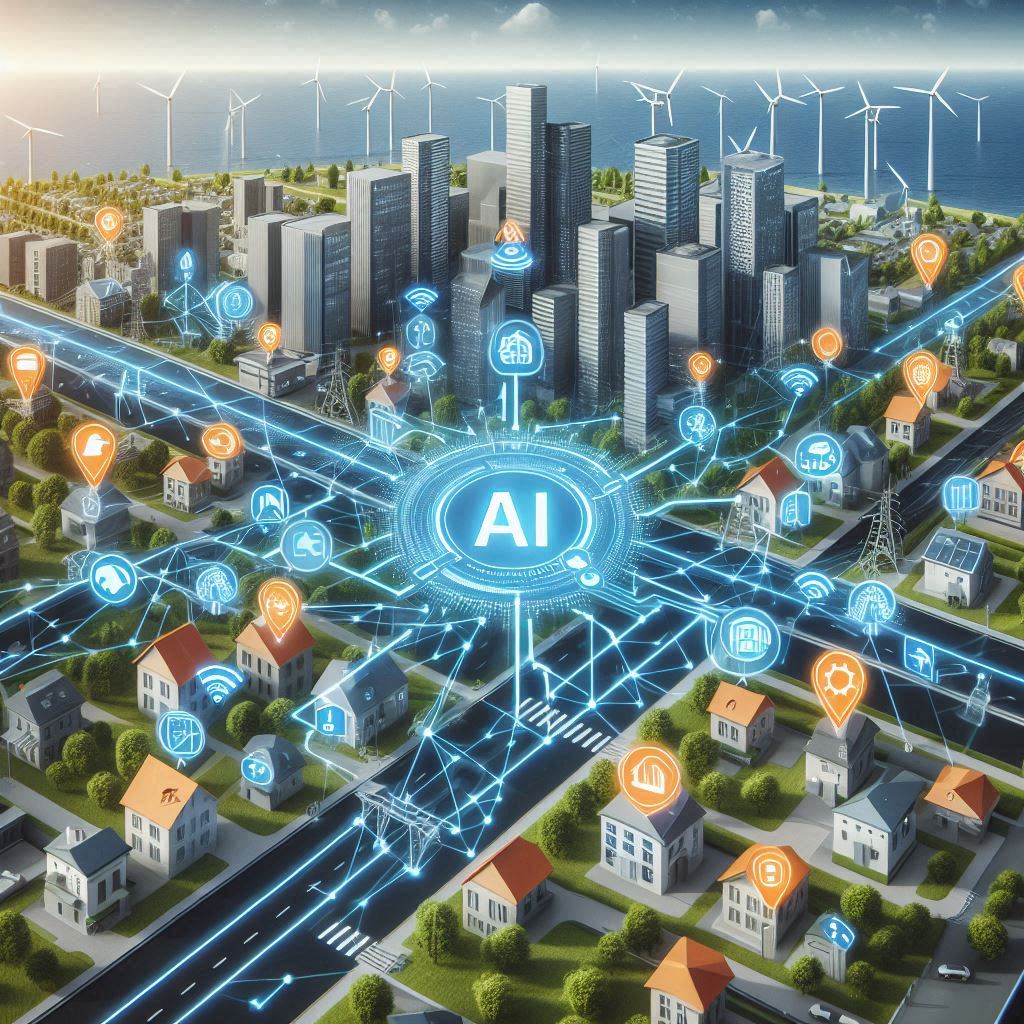
Smart Grids and AI: Improving Energy Efficiency
As the global demand for energy rises and the push for decarbonization intensifies, power systems are under increasing pressure to become more efficient, resilient, and sustainable. Traditional energy grids—designed for one-way electricity distribution—are proving inadequate in managing modern energy challenges, especially with the rise of renewables, electric vehicles, and decentralized energy production.
Enter smart grids: intelligent energy networks that use digital technology to monitor and manage electricity flows more effectively. At the heart of these systems lies Artificial Intelligence (AI), which plays a critical role in optimizing grid operations, enhancing energy efficiency, and driving the energy transition forward.
In this article, we explore how AI is revolutionizing smart grid functionality and making our energy systems more efficient, reliable, and intelligent.
What Is a Smart Grid?
A smart grid integrates digital communication and control technologies into the existing power grid, enabling two-way communication between utilities and consumers. It combines data from sensors, meters, and devices to make real-time decisions about electricity distribution, load balancing, and system health.
Smart grids allow:
- Real-time monitoring of power usage
- Automated demand response
- Integration of renewable energy sources
- Faster outage detection and recovery
- Dynamic pricing models based on demand
But managing such complexity requires sophisticated analytics and decision-making tools—where AI excels.
How AI Enhances Smart Grids
- Demand Forecasting
Machine learning models analyze historical consumption patterns, weather data, calendar events, and socioeconomic factors to forecast electricity demand with high accuracy. This ensures optimal generation scheduling and reduces unnecessary energy production.
- Load Balancing and Optimization
AI dynamically manages electricity distribution by identifying peak loads, predicting congestion, and redistributing power across the grid in real time. This minimizes energy losses and improves overall efficiency.
- Fault Detection and Predictive Maintenance
AI-powered diagnostics can detect anomalies in grid behavior, such as voltage drops, line faults, or equipment wear. Predictive algorithms help prevent blackouts by alerting operators before a failure occurs.
- Renewable Energy Integration
The intermittency of solar and wind energy poses challenges for grid stability. AI predicts renewable output and adjusts grid operations accordingly—smoothing fluctuations and ensuring stable supply.
- Energy Theft Detection
AI algorithms analyze usage patterns to detect unusual consumption behavior, flagging potential theft or faulty meters and improving grid transparency.
- Smart Meter Data Analysis
AI processes vast amounts of data from smart meters to uncover usage trends, optimize pricing strategies, and enable consumers to adjust behavior through targeted feedback.
Benefits of AI-Driven Smart Grids
- Improved energy efficiency and reduced operational costs
- Enhanced reliability and faster response to outages
- Greater integration of renewable energy sources
- Lower greenhouse gas emissions
- Empowered consumers through real-time energy insights
Case Example: AI in Grid Operations
In countries like the United States and Germany, utilities are already deploying AI in grid control centers to balance supply and demand more effectively. For example, using reinforcement learning algorithms, operators can optimize substation switching and voltage levels in real time—reducing transmission losses and lowering energy bills.
Challenges and Considerations
- Data Privacy: AI relies on granular data, raising privacy concerns among consumers.
- Cybersecurity: As smart grids become more digitized, they become more vulnerable to cyberattacks.
- Integration with Legacy Systems: Upgrading infrastructure to accommodate AI tools can be costly and complex.
- Regulatory Hurdles: Regulatory frameworks must evolve to accommodate dynamic, AI-driven operations.
The Future: Self-Healing and Autonomous Grids
As AI continues to evolve, the future of smart grids lies in self-healing and autonomous systems. These grids will detect, isolate, and repair faults automatically, and dynamically adjust to load and generation changes with minimal human intervention—maximizing energy efficiency, resilience, and sustainability.
Conclusion
Artificial Intelligence is the brainpower behind the smart grid revolution. By turning real-time data into actionable insights, AI enables smarter, cleaner, and more efficient energy systems. As the world races to meet climate goals and modernize its infrastructure, AI-powered smart grids will be essential in shaping the resilient energy ecosystems of tomorrow.
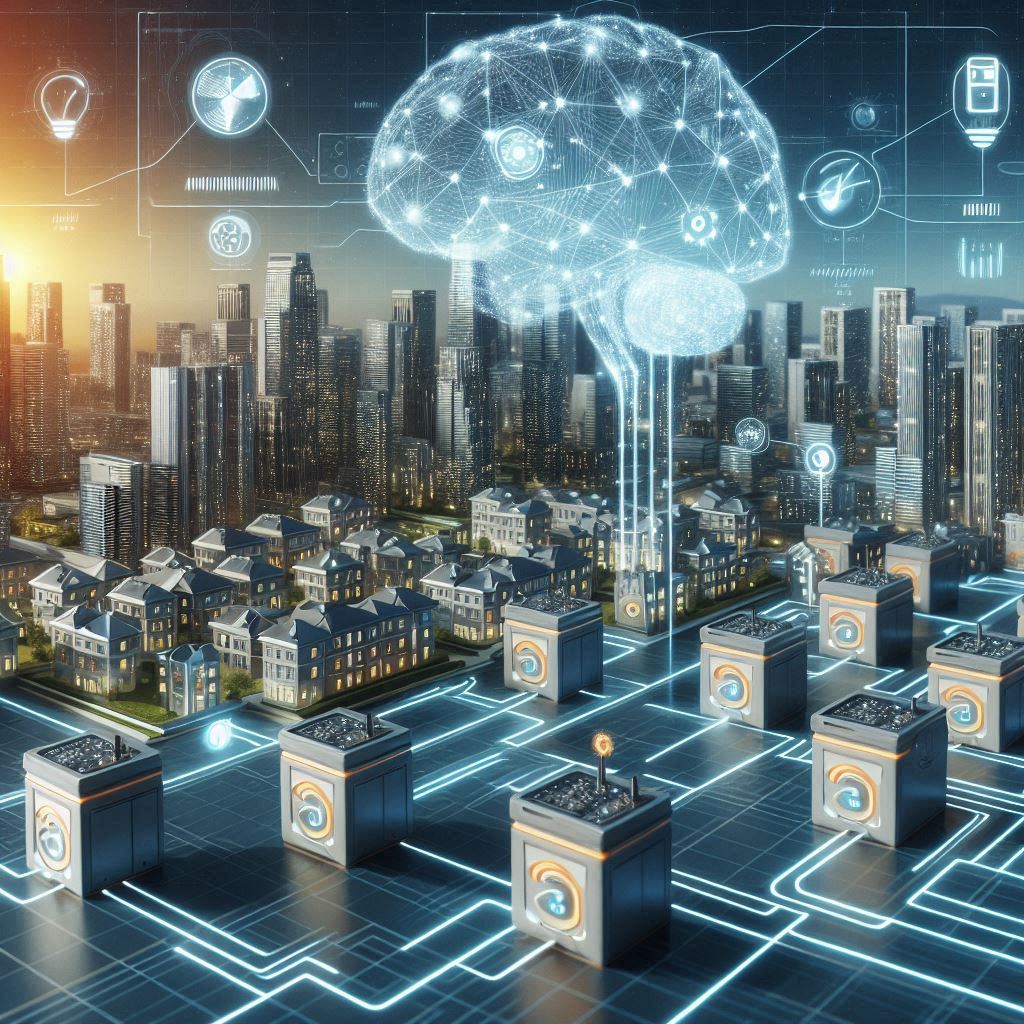
AI in Energy Storage Optimization
As renewable energy sources like solar and wind continue to gain traction globally, energy storage systems (ESS) have become vital for balancing energy supply and demand. However, managing these systems efficiently—especially across varying loads, intermittent generation, and changing market conditions—requires more than traditional methods. Enter Artificial Intelligence (AI): a transformative force that’s reshaping how energy storage is modeled, managed, and optimized.
This article explores how AI technologies are revolutionizing energy storage optimization, from real-time decision-making and load forecasting to dynamic pricing and predictive maintenance.
Why Energy Storage Matters
Energy storage plays a crucial role in modern energy infrastructure by:
- Balancing supply and demand in real time
- Smoothing out the intermittency of renewables
- Supporting grid stability and reliability
- Reducing dependence on fossil fuel-based peaker plants
- Enabling energy trading and cost arbitrage
However, effectively managing when and how to store or release energy is a complex challenge that depends on a multitude of dynamic variables—making AI a natural fit.
Key AI Applications in Energy Storage Optimization
- Load Forecasting
Machine learning algorithms can predict energy demand patterns based on weather, historical usage, time of day, and user behavior. These predictions allow storage systems to prepare for peak or off-peak times more efficiently, improving reliability and reducing operational costs.
- Charge/Discharge Scheduling
AI can determine optimal times to charge or discharge batteries based on real-time data inputs such as electricity prices, renewable output, and grid load. This leads to increased profitability and enhanced system responsiveness.
- Predictive Maintenance
Through anomaly detection and pattern recognition, AI can anticipate battery degradation, overheating, or potential faults. This minimizes downtime and extends asset lifespan, significantly lowering long-term costs.
- Energy Trading Optimization
For energy producers or aggregators involved in trading, AI can analyze market signals and historical pricing data to make real-time decisions on when to sell stored energy for maximum return.
- Multi-System Coordination
In decentralized energy grids with multiple distributed energy resources (DERs), AI can coordinate operations across different storage units to optimize system-wide performance.
Case Example: AI-Enabled Battery Management Systems
Tesla and other energy innovators are already incorporating AI into their battery management systems (BMS) to regulate charging cycles, prevent degradation, and optimize for specific user needs. For example, AI can prioritize electric vehicle charging during periods of excess solar generation or minimize strain on the grid by discharging power during peak demand hours.
Benefits of AI in Storage Optimization
- Increased energy efficiency and reduced waste
- Improved grid reliability and resilience
- Lower operational and maintenance costs
- Enhanced ability to monetize stored energy
- Proactive issue detection and fault prevention
Challenges and Considerations
- Data Dependency: AI models require high-quality data, including real-time sensor readings and historical logs.
- Integration Complexity: Coordinating AI tools with existing infrastructure and legacy systems can be complex.
- Cybersecurity: As AI systems rely on cloud-based data processing, robust security measures are essential.
- Regulatory Hurdles: Market rules and grid regulations may not always accommodate dynamic, AI-driven decision-making.
The Future: AI and Edge Computing for Storage
The next frontier in energy storage optimization lies in the fusion of AI and edge computing. Deploying AI models directly on hardware near energy assets (such as batteries or substations) will enable ultra-fast, decentralized decision-making—ideal for time-critical applications like frequency regulation and microgrid management.
Conclusion
AI is not just an add-on for energy storage systems—it’s becoming the brain that drives smarter decisions across the entire energy value chain. From predicting usage patterns and pricing volatility to managing battery health and orchestrating multi-node systems, AI empowers energy stakeholders to extract maximum value from their storage assets. In a world increasingly dependent on clean, reliable energy, AI-enabled optimization is not just an advantage—it’s a necessity.
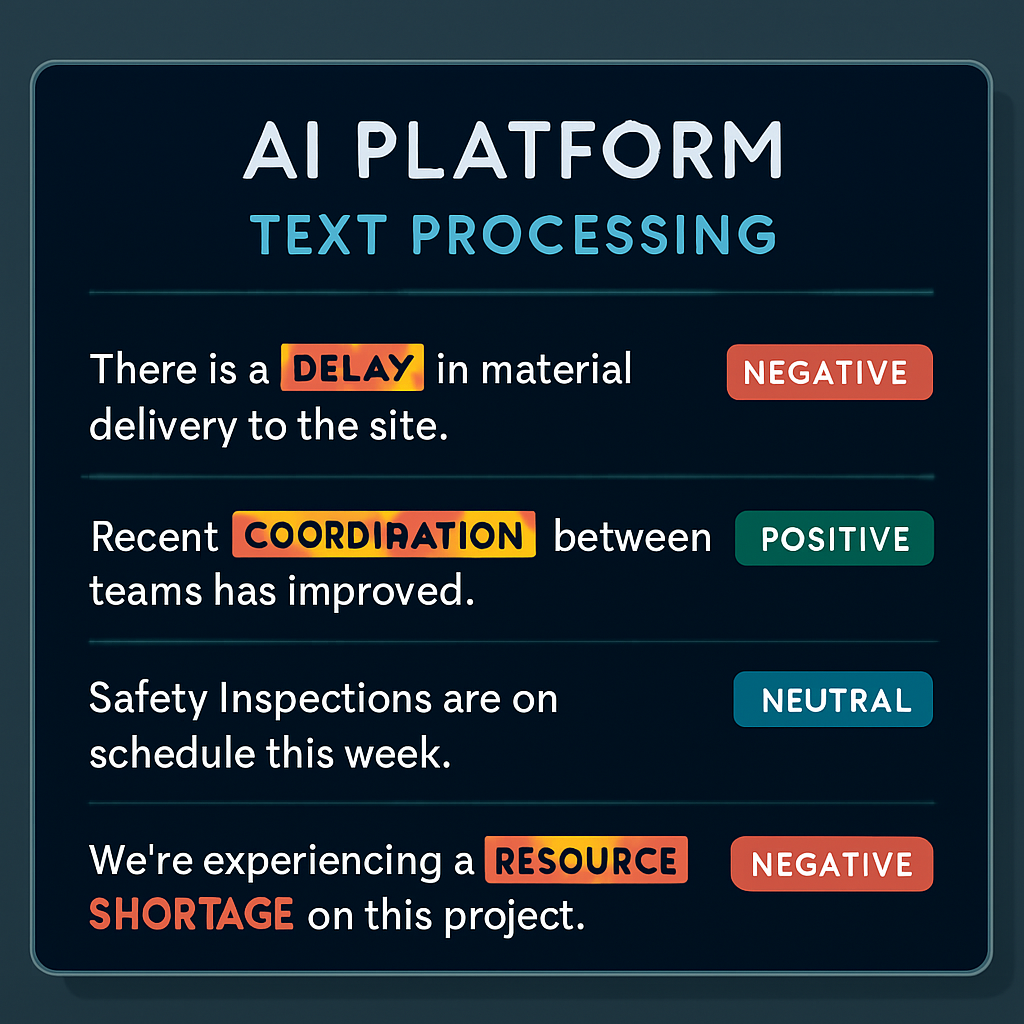
AI in Post-Project Analysis: Lessons Learned
Post-project analysis is a critical yet often overlooked phase in the lifecycle of construction and engineering projects. After the last brick is laid and the ribbon is cut, organizations must take the time to evaluate what went well, what went wrong, and how future projects can benefit from the experience.
Traditionally, this process involves manual reviews of reports, meetings, and anecdotal feedback—an approach that is time-consuming and subject to human bias. However, Artificial Intelligence (AI) is transforming how companies conduct post-project reviews by automating data collection, identifying patterns, and generating actionable insights.
In this article, we explore how AI technologies are improving the lessons-learned process, enabling smarter, more efficient project delivery in the future.
Why Post-Project Analysis Matters
Every project—successful or not—offers valuable information. A robust post-project analysis helps organizations:
- Identify systemic issues in workflows or processes
- Document best practices for repeatability
- Improve budgeting, scheduling, and resource planning
- Reduce recurring errors across projects
- Strengthen team performance and collaboration
Yet, without a structured and data-driven approach, many valuable lessons remain untapped. This is where AI shines.
How AI Enhances Post-Project Analysis
- Automated Data Aggregation
AI can ingest and synthesize vast amounts of project data, including schedules, cost reports, communication logs, change orders, safety incidents, and quality control checklists. This ensures that all aspects of the project are considered, not just the most visible or recent.
- Pattern Recognition & Anomaly Detection
Machine learning algorithms can detect recurring problems—like repeated delays from a subcontractor or consistent underestimation of materials—and identify anomalies, such as a sudden spike in cost during a specific phase.
- Natural Language Processing (NLP) for Feedback Analysis
AI-powered NLP tools can analyze qualitative feedback from site logs, meeting transcripts, or surveys. Sentiment analysis helps gauge team satisfaction, while keyword extraction highlights recurring themes such as safety concerns, coordination issues, or material shortages.
- Visual Dashboards & Smart Reporting
AI tools can generate visual summaries and reports that highlight key findings and trends. Interactive dashboards help stakeholders quickly identify root causes, bottlenecks, and improvement areas.
- Knowledge Retention & Recommendation Engines
AI can store and categorize lessons learned in a structured knowledge base. Recommendation systems can later suggest relevant learnings for new projects with similar parameters, ensuring past insights are actually used.
Real-World Application
Imagine a construction firm analyzing a completed airport terminal project. AI reviews thousands of daily reports, finds that delays consistently occurred during HVAC installation, and links them to late material shipments. Meanwhile, sentiment analysis reveals low morale in the electrical team during peak load. This insight prompts the company to renegotiate supplier agreements and improve team communication processes for future projects.
Benefits of Using AI in Lessons Learned
- Eliminates human bias and improves objectivity
- Reduces time and labor needed for manual reviews
- Enables continuous improvement across portfolios
- Transforms tacit knowledge into institutional knowledge
- Improves forecasting and planning accuracy for future work
Challenges and Considerations
- Data Quality: AI tools require clean, structured data. Investing in good project documentation practices is key.
- Interpretation: AI can point to patterns, but human oversight is needed to contextualize and interpret the insights.
- Change Management: Teams may be resistant to new tools. Training and leadership support are essential.
Future Outlook
As AI tools become more sophisticated and integrated with Building Information Modeling (BIM) and project management platforms, post-project analysis will evolve into a near real-time, continuous learning system. In the future, insights from finished projects could be used dynamically to adjust live projects, closing the loop between learning and execution.
Conclusion
AI is revolutionizing the way we reflect on completed construction projects. By automating and enhancing the lessons-learned process, organizations can turn hindsight into foresight—ensuring that every project leaves a legacy of smarter decision-making. With AI as an ally, the end of a project is no longer just a finish line—it’s a launchpad for innovation.
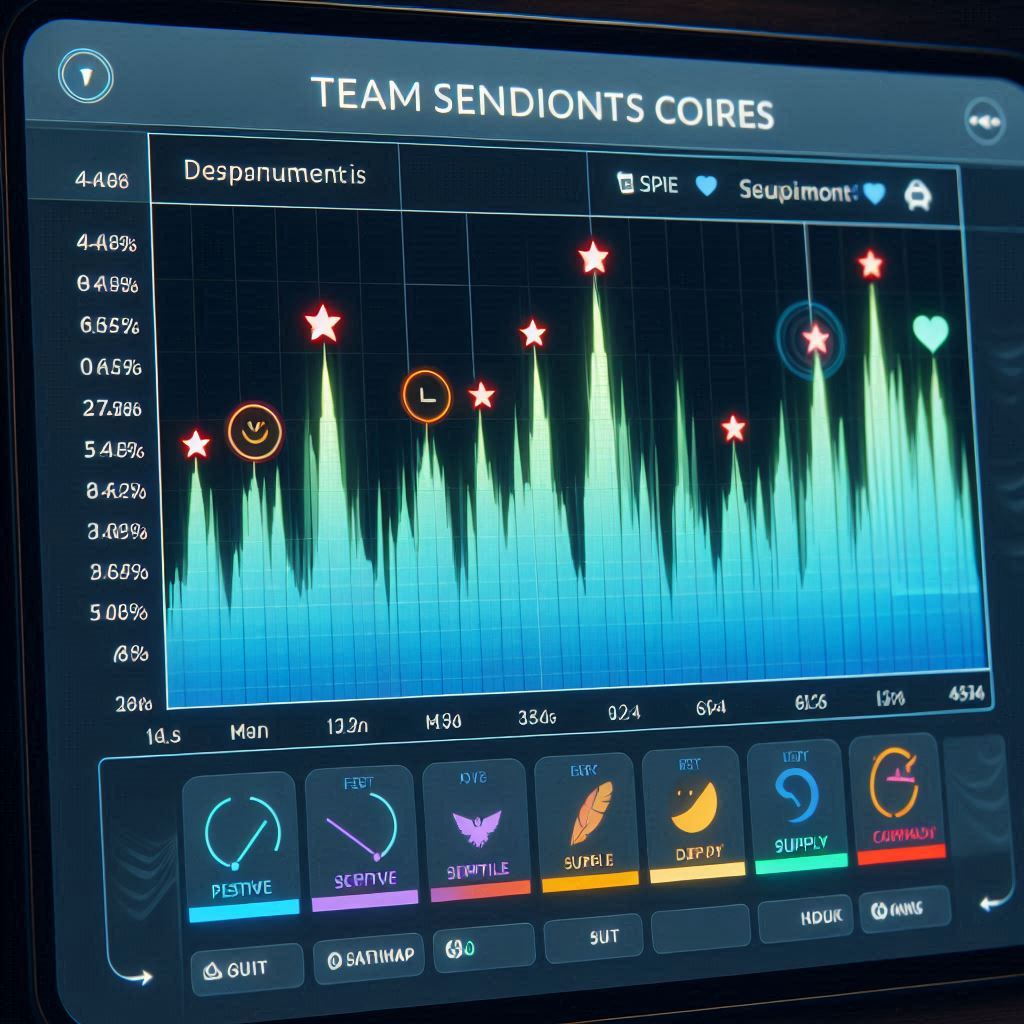
Sentiment Analysis for Improving Team Collaboration
Effective communication and collaboration are the backbones of any successful construction project. Yet, in complex, high-pressure environments where multiple stakeholders interact—contractors, engineers, architects, clients, and labor crews—misunderstandings, dissatisfaction, and misaligned expectations can easily derail progress.
This is where sentiment analysis, a branch of Natural Language Processing (NLP), steps in. By automatically analyzing the emotional tone and intent behind communications such as emails, meeting transcripts, field notes, and chat messages, sentiment analysis can identify emerging issues, boost morale, and improve overall team cohesion.
In this article, we explore how sentiment analysis is being used in construction project management to enhance team collaboration and ensure smooth project execution.
What is Sentiment Analysis?
Sentiment analysis is the computational process of detecting emotions, attitudes, and opinions in text-based data. It classifies text as positive, negative, or neutral, and can also detect specific emotions such as frustration, satisfaction, urgency, or confidence.
Using advanced machine learning algorithms and linguistic rules, sentiment analysis tools can process large volumes of unstructured communication to provide actionable insights into team dynamics.
How It Improves Team Collaboration
- Early Detection of Friction Points
By analyzing project-related messages, meeting notes, or daily field logs, sentiment analysis can detect negative trends—such as repeated expressions of concern, dissatisfaction, or confusion—before they escalate into conflicts or delays.
- Enhancing Communication Transparency
Supervisors and project managers gain a bird’s-eye view of overall team sentiment. If a specific subcontractor’s crew is frequently frustrated or confused, targeted interventions like clarifying documentation or realigning schedules can be initiated promptly.
- Supporting Leadership Decisions
Quantifying sentiment trends helps leaders make data-driven decisions. For instance, recurring negative feedback in crew messages could prompt improvements in safety protocols, equipment availability, or even site layout.
- Promoting Psychological Safety
When team members know their concerns are being heard—albeit through automated sentiment tracking—it builds trust. Over time, this encourages more open and honest communication.
- Performance and Satisfaction Insights
Sentiment analysis allows organizations to track how sentiment changes across project phases. Positive spikes may coincide with milestone completions, while negative dips might align with resource shortages, allowing for timely and empathetic leadership responses.
Key Use Cases in Construction
- Email & Message Analysis: Assess tone in internal team communications to identify misunderstandings or morale issues.
- Meeting Transcripts: Analyze the mood and engagement level from meeting notes or transcriptions of voice recordings.
- Field Logs: Evaluate daily logs for sentiment fluctuations indicating on-site dissatisfaction or motivation.
- Feedback Forms: Process qualitative feedback from staff surveys to identify trends in satisfaction or discontent.
Real-World Example
A general contractor managing a large-scale infrastructure project used sentiment analysis to monitor daily logs and emails across multiple teams. The tool flagged an increase in negative sentiment from one subcontractor’s crew. On investigation, it was revealed that a delay in material delivery was affecting their schedule. Early detection helped the management team intervene, resolve the issue, and restore morale—without disrupting the critical path of the project.
Benefits of Sentiment Analysis in Collaboration
- Improves morale and workplace satisfaction
- Detects conflict or disengagement before it becomes costly
- Strengthens communication between teams
- Enhances responsiveness to employee needs
- Supports better decision-making through emotional intelligence
Challenges and Considerations
- Privacy and Trust: Employees may feel uneasy if sentiment analysis feels invasive. Transparent communication about its use is crucial.
- Contextual Accuracy: Slang, sarcasm, or construction-specific jargon may be misinterpreted unless the system is trained accordingly.
- Integration: For best results, sentiment tools should integrate with email, project management, and documentation platforms.
Best Practices for Implementation
- Choose tools with customizable lexicons to match industry terminology
- Start with pilot teams to refine accuracy and interpretation
- Combine sentiment data with other KPIs (productivity, safety) for a holistic view
- Clearly communicate how and why sentiment analysis is being used
- Use findings to empower leaders, not punish employees
Conclusion
In an industry where timelines are tight and teamwork is vital, understanding how people feel—before they even say it out loud—can be a game-changer. Sentiment analysis offers a subtle yet powerful way to promote collaboration, maintain morale, and catch warning signs before they spiral into bigger problems.
By embracing this technology, construction firms can not only build better structures but also stronger, more connected teams.
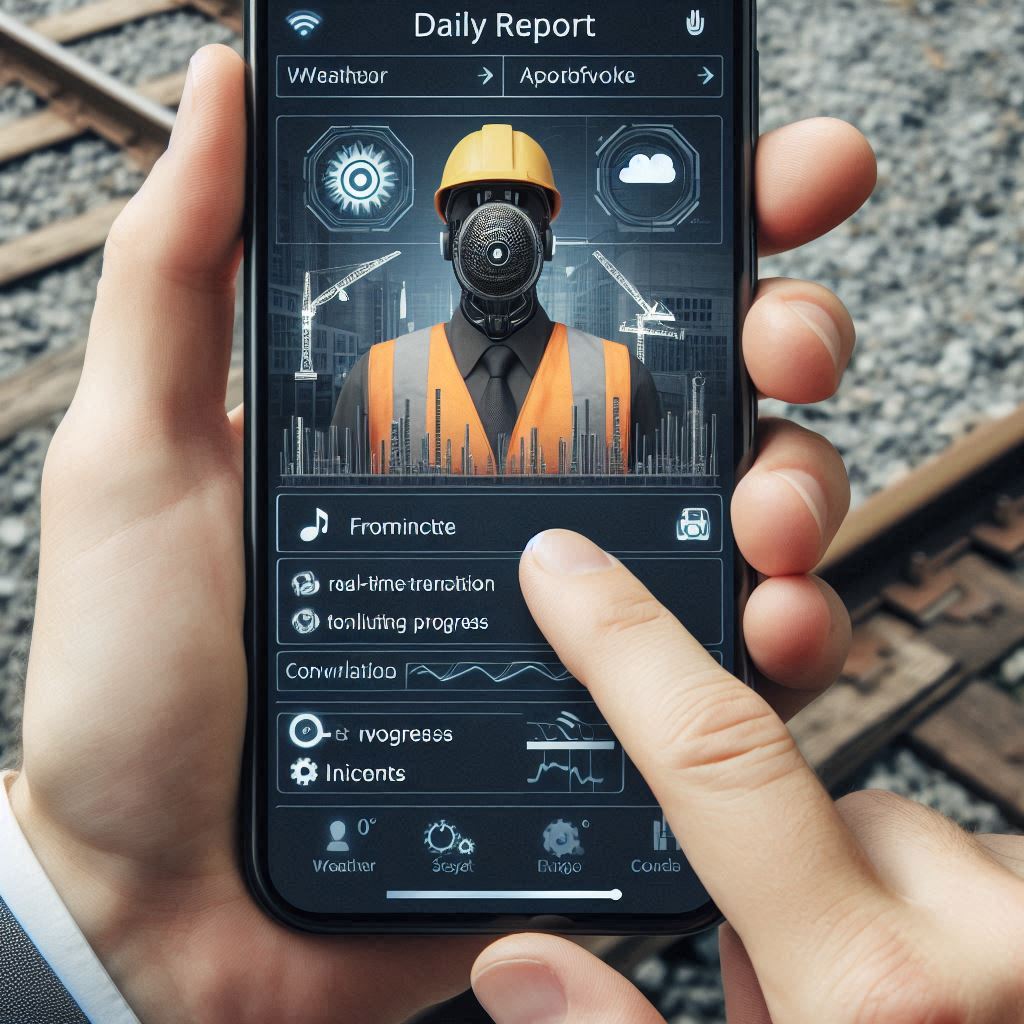
Automating Project Reports with Natural Language Processing
Project reporting is a cornerstone of construction management, critical for tracking progress, maintaining stakeholder communication, and ensuring accountability. However, generating these reports—whether daily field logs, weekly updates, or monthly executive summaries—can be time-consuming, repetitive, and prone to human error.
Enter Natural Language Processing (NLP), a subfield of artificial intelligence that enables machines to understand, interpret, and generate human language. By leveraging NLP, construction teams can automate the creation, summarization, and analysis of project reports, saving hours of manual labor while improving accuracy and consistency.
In this article, we’ll explore how NLP is transforming construction project reporting, what technologies are involved, and how your team can adopt these tools for smarter, faster documentation.
The Problem with Traditional Reporting
Manual project reporting involves:
- Transcribing handwritten notes or voice memos
- Summarizing daily site conditions, workforce data, and equipment usage
- Tracking materials, weather impacts, and incidents
- Reformatting data to match client or regulatory templates
This process not only eats into valuable time but also introduces the risk of inconsistent reporting, incomplete data, and subjective interpretation.
With construction projects growing more complex and data-rich, traditional reporting methods can’t keep up with the speed and scale of information required for modern decision-making.
How NLP Automates Project Reporting
- Voice-to-Text Report Generation
Site supervisors can dictate daily observations using a mobile app or wearable device. NLP algorithms convert speech into structured text, filtering out irrelevant chatter and formatting the report based on predefined templates.
- Automated Daily Logs and Summaries
NLP systems can extract data from multiple sources—IoT sensors, project management software, emails, and text messages—to automatically generate daily or weekly site logs. These reports summarize key events, milestones achieved, and deviations from the plan.
- Sentiment Analysis for Risk Detection
By analyzing the tone and content of field notes, incident reports, and team communications, NLP can detect potential morale issues or risks. For example, a spike in negative sentiment may indicate rising tension on-site or dissatisfaction with subcontractors.
- Document Classification and Retrieval
NLP-powered systems can tag and organize thousands of documents—RFIs, change orders, safety reports—making them instantly searchable by topic, date, or issue. This makes audits, reviews, and dispute resolutions far more efficient.
- Multilingual Translation and Standardization
On international or multicultural projects, NLP can translate and unify reports across multiple languages, ensuring consistency and compliance regardless of who submits the data.
Benefits of NLP-Driven Report Automation
- Saves time and reduces reporting overhead
- Improves data quality and report consistency
- Enables real-time insights for faster decisions
- Enhances compliance and audit readiness
- Reduces risk of miscommunication or overlooked issues
Real-World Applications
- A major general contractor implemented NLP to automate daily field reports, reducing manual entry time by over 60% and cutting errors in documentation.
- On a large infrastructure project, an NLP platform analyzed safety reports and flagged emerging risks based on repetitive patterns in incident descriptions.
- A multinational firm used NLP to translate and consolidate reports across three languages, streamlining communication between teams in different regions.
Challenges and Considerations
- Data Privacy and Security: Reports may contain sensitive or proprietary information, so platforms must comply with data protection standards.
- Training and Customization: NLP systems must be trained on industry-specific language, acronyms, and slang to ensure accuracy.
- User Adoption: Teams may need support in adjusting to voice-enabled or automated tools.
- Integration: Successful NLP deployment depends on connectivity with other tools like BIM, scheduling, and document management platforms.
How to Get Started
- Identify the most time-consuming reporting processes in your workflow.
- Choose an NLP platform designed for construction or customizable with domain-specific vocabularies.
- Pilot the system on a small team or project to refine templates and gather feedback.
- Ensure integration with your broader construction tech stack.
- Provide training and change management support for successful adoption.
Conclusion
Natural Language Processing is revolutionizing how construction teams document and communicate. By automating report generation and turning unstructured text into actionable insights, NLP frees up valuable time, reduces risk, and brings new levels of clarity to project oversight.
As the construction industry continues to embrace digital transformation, NLP will become an essential tool—not only for streamlining workflows but also for enhancing collaboration and transparency across every stage of the project lifecycle.

Predicting Project Delays with Machine Learning
Construction projects are inherently complex, involving numerous stakeholders, shifting timelines, evolving budgets, and unpredictable external factors. Despite thorough planning, delays remain one of the most common—and costly—challenges in the industry. Inaccurate forecasting can lead to budget overruns, missed milestones, and strained client relationships.
Machine Learning (ML), a form of artificial intelligence that excels at identifying patterns in large datasets, is now being used to anticipate project delays before they happen. By analyzing historical data, site conditions, scheduling dependencies, weather patterns, and workforce dynamics, ML helps project managers make proactive decisions that mitigate risk and improve on-time delivery.
In this article, we explore how ML is transforming delay prediction in construction and how your team can harness its power.
Why Traditional Delay Prediction Falls Short
Project managers have historically relied on Gantt charts, critical path analysis, and experience to assess schedule risks. While effective in stable environments, these methods often fall short in real-world construction settings where conditions are dynamic and interdependent.
Common limitations include:
- Reactive rather than proactive management
- Inability to process vast or real-time data
- Human bias in assessing delay risk
- Fragmented data across departments
Machine Learning overcomes these issues by continuously learning from diverse data sources and generating objective, data-driven predictions.
How Machine Learning Predicts Delays
- Analyzing Historical Project Data
ML algorithms are trained on datasets from past projects—covering schedules, delays, cost overruns, resource allocation, subcontractor performance, and environmental factors. The models learn which variables most commonly lead to delays and use those patterns to assess risk in new projects.
- Real-Time Risk Assessment
ML tools integrated with project management platforms can analyze real-time data—such as actual vs. planned progress, daily site reports, equipment usage, and material deliveries—to flag when activities deviate from expected performance.
- Forecasting Weather and Environmental Impacts
ML models can incorporate weather forecasts, geospatial data, and site conditions to predict disruptions caused by rain, wind, heat, or natural events, particularly for activities like excavation, concrete pouring, or crane operations.
- Workforce and Equipment Performance Tracking
By monitoring worker attendance, productivity levels, and machinery usage, ML can detect signs of reduced efficiency or upcoming equipment downtime—early indicators of schedule slippage.
- Dynamic Schedule Optimization
ML algorithms can simulate thousands of schedule permutations based on current conditions and recommend updated plans to prevent cascading delays from affecting the critical path.
Benefits of ML-Powered Delay Prediction
- Early Warning System: Predict problems before they affect the schedule.
- Improved Accuracy: Leverages historical and real-time data for more precise forecasting.
- Better Resource Allocation: Reprioritize labor and equipment based on predicted bottlenecks.
- Increased Stakeholder Confidence: Transparency and foresight build trust with clients and investors.
- Lower Cost Overruns: Fewer delays mean fewer penalty costs and less rework.
Real-World Applications
- A global contractor used ML to analyze years of project data and developed a delay prediction model that achieved over 85% accuracy. It now serves as an early warning tool across major infrastructure projects.
- A mid-sized firm integrated ML into its project management software to monitor real-time site activity, predicting delays due to material supply issues with a two-week lead time.
Challenges to Consider
- Data Availability and Quality: Incomplete or inconsistent data can limit model performance.
- Cultural Adoption: Teams may be hesitant to rely on AI-driven recommendations over human judgment.
- Integration Complexity: ML systems must align with existing scheduling and reporting tools.
- Continuous Training: Models require periodic retraining to adapt to new types of projects or changes in industry practices.
Getting Started
- Begin by digitizing and centralizing historical project data.
- Identify key performance indicators (KPIs) that commonly correlate with delays.
- Choose ML platforms that integrate with your current tools (e.g., BIM, Primavera, Procore).
- Start small—pilot ML on a specific project phase or risk area before scaling across projects.
- Involve both data scientists and project managers in model development to ensure practical relevance.
Conclusion
Machine Learning empowers construction professionals with foresight once thought impossible. By predicting project delays early and accurately, teams can adjust plans, manage risk proactively, and protect project margins. As data becomes more accessible and algorithms more refined, predictive analytics will become a cornerstone of construction project management.
Embracing ML doesn’t just improve timelines—it builds a more intelligent, resilient, and competitive construction enterprise.
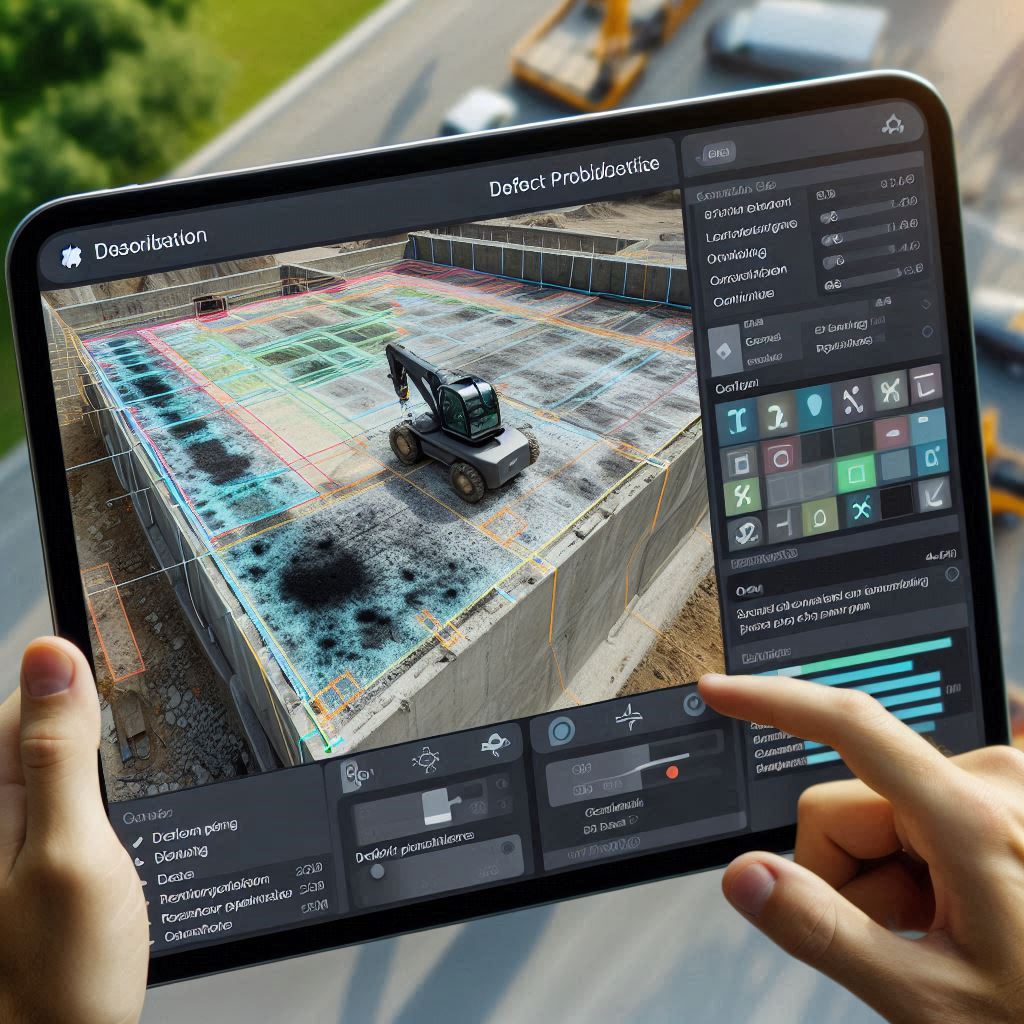
Enhancing Construction Quality Assurance with Machine Learning
In an industry where precision, safety, and durability are paramount, quality assurance (QA) in construction plays a vital role. From material testing to structural integrity and adherence to building codes, QA ensures that every element of a construction project meets specified standards. Traditionally, this process has relied heavily on manual inspections, checklists, and human oversight. However, with the growing complexity of modern projects and the vast amount of data generated, traditional QA methods face increasing challenges.
Enter Machine Learning (ML)—a subset of artificial intelligence that is revolutionizing quality assurance in construction. ML enables project teams to analyze patterns, detect anomalies, and predict issues before they compromise quality, all with unprecedented speed and accuracy.
The Traditional QA Challenge
Construction QA has long suffered from inefficiencies:
- Manual inspections are time-consuming and labor-intensive.
- Human error and inconsistency can lead to oversight.
- Data from inspections, materials, and construction progress is often siloed or underutilized.
- Delays in identifying defects can escalate project costs and impact safety.
Machine Learning is changing the game by turning raw construction data into actionable insights for QA and quality control (QC).
How Machine Learning Enhances Construction QA
- Predictive Defect Detection
ML models trained on historical defect data can recognize patterns that precede quality issues. For instance, they can predict concrete cracking based on mix design, curing conditions, and ambient temperature data. By flagging risks early, teams can take corrective action before a defect occurs.
- Automated Visual Inspection
Using computer vision—a branch of ML—QA inspectors can automate the detection of surface defects such as cracks, spalling, or misalignments through drone footage or camera feeds. This reduces inspection time and improves accuracy while minimizing the need for physical access to hazardous or hard-to-reach areas.
- Intelligent Sensor Monitoring
On-site IoT sensors monitor parameters such as humidity, vibration, and temperature in real time. ML algorithms analyze this sensor data to detect anomalies (e.g., unstable foundation conditions) and ensure that environmental conditions meet quality standards during critical phases like concrete curing or steel welding.
- Quality Trend Analysis
ML can spot trends in QA data that may indicate systemic problems—such as a specific subcontractor repeatedly delivering below-spec work or certain materials consistently failing stress tests. This allows for data-driven decision-making and long-term process improvement.
- Documentation and Compliance Automation
ML-powered natural language processing (NLP) tools can sift through QA reports, safety documentation, and compliance checklists to ensure all requirements are being met and flag potential oversights. This helps streamline audits and regulatory reviews.
- Real-Time Quality Dashboards
Machine learning integrates disparate data streams—from BIM systems, inspection reports, sensor networks, and scheduling tools—into centralized dashboards. These provide real-time QA status updates, highlighting areas that need immediate attention and tracking the resolution of issues over time.
Benefits of ML-Driven QA in Construction
- Improved Detection Accuracy: ML identifies defects or deviations that humans might overlook.
- Faster Response Time: Real-time analysis accelerates issue identification and resolution.
- Lower Rework Costs: Early detection means problems are fixed before they escalate.
- Better Compliance: Automated tracking ensures consistent adherence to quality and safety standards.
- Continuous Learning: ML systems improve with time, becoming more accurate as more data is collected.
Use Cases and Examples
- A general contractor uses drones combined with ML-based image analysis to inspect exterior façades for cracking or misaligned panels, reducing inspection times by 70%.
- A precast concrete manufacturer employs ML to analyze QA testing data, flagging potential inconsistencies in curing processes before products leave the facility.
- On a highway infrastructure project, embedded vibration and load sensors feed data to an ML system that monitors bridge girder stress, automatically alerting engineers to early fatigue signs.
Challenges and Considerations
- Data Quality and Availability: ML needs large amounts of high-quality, labeled data for training.
- Integration Complexity: Existing construction workflows may require adaptation to accommodate new technologies.
- Workforce Training: Teams must be trained to understand and trust ML outputs and adjust processes accordingly.
- Cost and ROI: Initial investment in ML tools and sensor infrastructure may be high, but the long-term savings from reduced rework and defects are significant.
The Road Ahead
As construction projects grow in scale and complexity, quality assurance will only become more critical. Machine learning offers a scalable, data-driven approach that not only enhances QA effectiveness but also supports a culture of continuous improvement. With further integration into digital twins, augmented reality, and mobile inspection platforms, ML is set to become a cornerstone of intelligent, high-performance construction.









